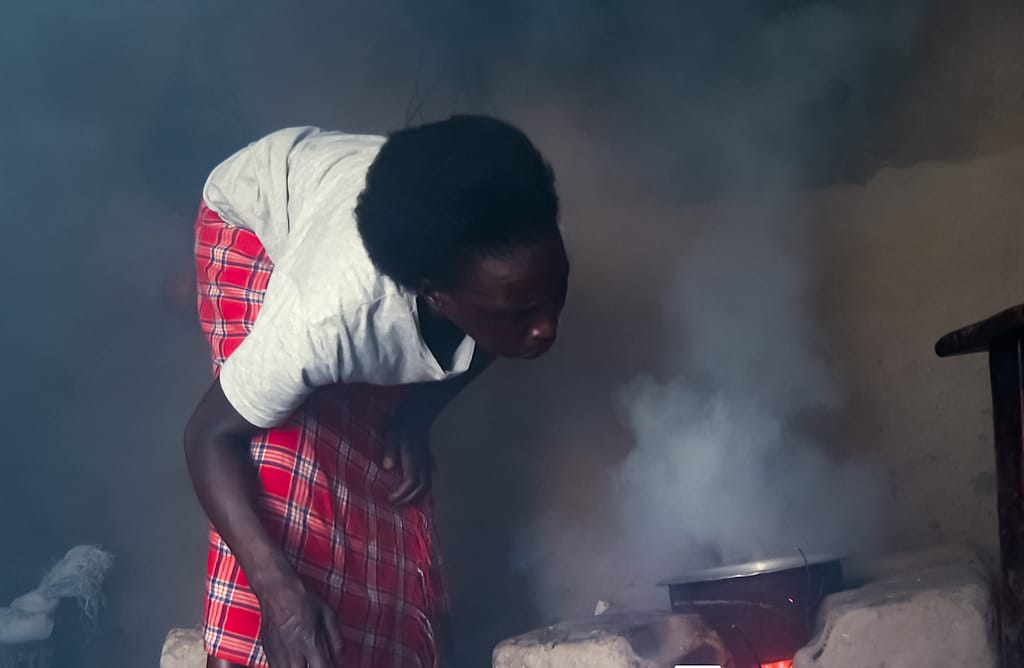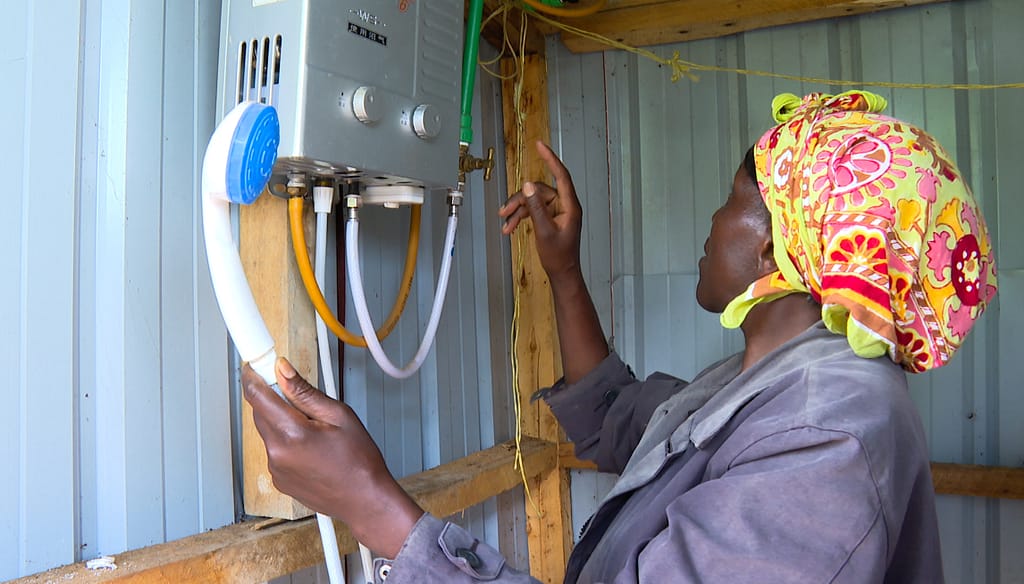In the remote village of Syongiloi, Bomet County, Kenya, smoke drifts from Gladys Chelagat’s grass-thatched kitchen roof. Inside, she tends to a traditional three-stone fire fueled by firewood—her primary cooking method.
As she bends over to fan the flames, Gladys reflects on the risks: “The smoke affects my eyes, and sometimes I have to visit the hospital,” she shares. “The doctor suggests using cleaner energy sources, but I just can’t afford gas.”

For Gladys and many rural Kenyans, the idea of transitioning to clean, renewable energy feels like a distant hope. Despite the health and environmental dangers, the high costs of modern energy solutions, like gas or electricity, keep them tied to traditional methods.
In contrast, in Kieni, Nyeri County, another story unfolds. Purity Ndegwa, a retired civil servant, embraced a sustainable solution—biogas—when she moved to the area in 2019.
“We had cows, but we were just letting their dung go to waste,” she says, smiling. After visiting a neighbor who had switched to biogas, Purity saw the benefits firsthand. “I realized we could convert the waste into biogas. Now, we use it for cooking, heating water, and lighting our home.”

Since then, Purity has also installed solar panels, powering her electronic devices and lighting without depending on fossil fuels. “It’s been life-changing,” she adds.
While individual success stories like Purity’s offer hope, the broader global picture is more concerning. According to the Climate Action Network’s 2024 report, no country is on track to achieve 100% renewable energy by 2050. Developed nations, despite their resources, are lagging behind in their efforts to phase out fossil fuels. This delay has left millions, particularly in rural regions, without access to clean energy.
Julie Ducasse, Renewable Energy Data Coordinator at Climate Action Network International, explains the unevenness of the transition. “The renewable energy transition is leaving millions without clean electricity, especially in rural regions. Developed countries aren’t doing enough to support developing nations with adequate financial aid.”
Kenya, despite challenges, has emerged as a global leader in renewable energy. Currently, nearly 90% of its national grid is powered by clean energy sources like solar, wind, and geothermal power. The country’s ambitious goal to reach 100% renewable energy by 2022 fell short, but it’s now projected to meet that goal by 2030.
The Climate Investment Funds (CIF) report praises Kenya’s progress as an example for other countries. However, Karabo Mokgonyana, Renewable Energy Campaigner at Power Shift Africa, warns that many African countries, including Kenya, are still grappling with the deep inequalities that hinder widespread access to clean energy.
“Africa and other developing regions are being left behind in this global energy race,” Mokgonyana explains. “We’re locked out by high costs, foreign debt, and limited access to technology.”
For millions of Kenyans, like Gladys Chelagat, the energy transition remains out of reach. According to a recent ScienceDirect report, 85% of Kenyans still rely on wood biomass for energy, with rural households making up 86% of that number.

For rural communities, the financial and logistical barriers to cleaner energy are significant. Gladys longs for a solution that would improve her health and the environment, but she’s trapped in a cycle of poverty that limits her options.
With global temperatures rising and climate change worsening, the need for a clean energy future has never been more urgent. But this transition must be equitable and accessible to everyone, regardless of geography or income.
The challenge is clear: wealthier nations must increase their efforts to phase out fossil fuels and financially support developing countries in making the shift. Corporations must uphold human rights and environmental protections. And governments must create policies that bring clean, affordable energy to rural and underserved communities.
It’s time to turn ambition into action.
The renewable energy transition is crucial for our planet’s future. It must be fair, inclusive, and, above all, accessible to everyone.




